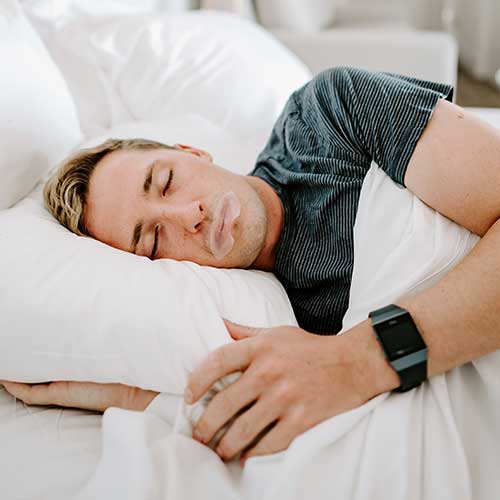We are delighted to share the following article that was published in the New York Times, written by Malia Wollan, on April 23, 2019.
‘‘Start by being cognizant of your breathing patterns during the day,” says Nicholas Michalak, chief executive at SomniFix, a company that sells adhesive strips for people who want to tape their mouths shut at night to enforce nose breathing. Set alarms on your phone throughout the day to check in and remind yourself to use your nostrils. Humans naturally do most of their breathing through their nasal passages, which serve to heat, humidify and filter the air. It’s not uncommon, though, to slip into a mouth-breathing habit. Test yourself by inhaling through your nostrils. If you can’t, you may have some kind of obstruction, and should go see an ear, nose and throat specialist. If you can but tend not to, you may be an accidental mouth breather.
Scientists link habitual mouth breathing to a host of medical issues, including sleep problems, learning disorders, tooth decay, bad breath and jaw deformities in children. Plus, a new study suggests that there may be a legitimate basis for “mouth breather” being slang for a stupid person. Japanese researchers obstructed the nostrils of young rats, forcing them to breathe through their mouths, and two weeks later found that the rodents needed twice as long to navigate a maze and had developed fewer brain cells than their unobstructed counterparts. “There are very few things that people can do to improve their health as much as simply switching to nasal breathing,” says Michalak, who tapes his mouth shut every night and claims he can spot mouth breathers in a crowd of strangers by looking at their jaws.
Try keeping your lips closed unless you’re talking, eating or doing strenuous exercise. You’ll notice that you’re working harder; the nasal route adds at least 50 percent more resistance to airflow, which turns out to be beneficial for your lungs, heart and even the biochemistry of your brain. If you snore, or wake up with a dry mouth or nasal congestion, you’re probably also mouth breathing at night. Consider tape. Michalak swears it’s easy to remove — “not like duct tape” — and far less scary than it might seem. Your nose is an intricate air filter, navigation tool and mood enhancer all in one. Use it; suck in that air; smell the world you live in.
Published by and written for The New York Times:https://www.nytimes.com/2019/04/23/magazine/how-to-be-a-nose-breather.html



